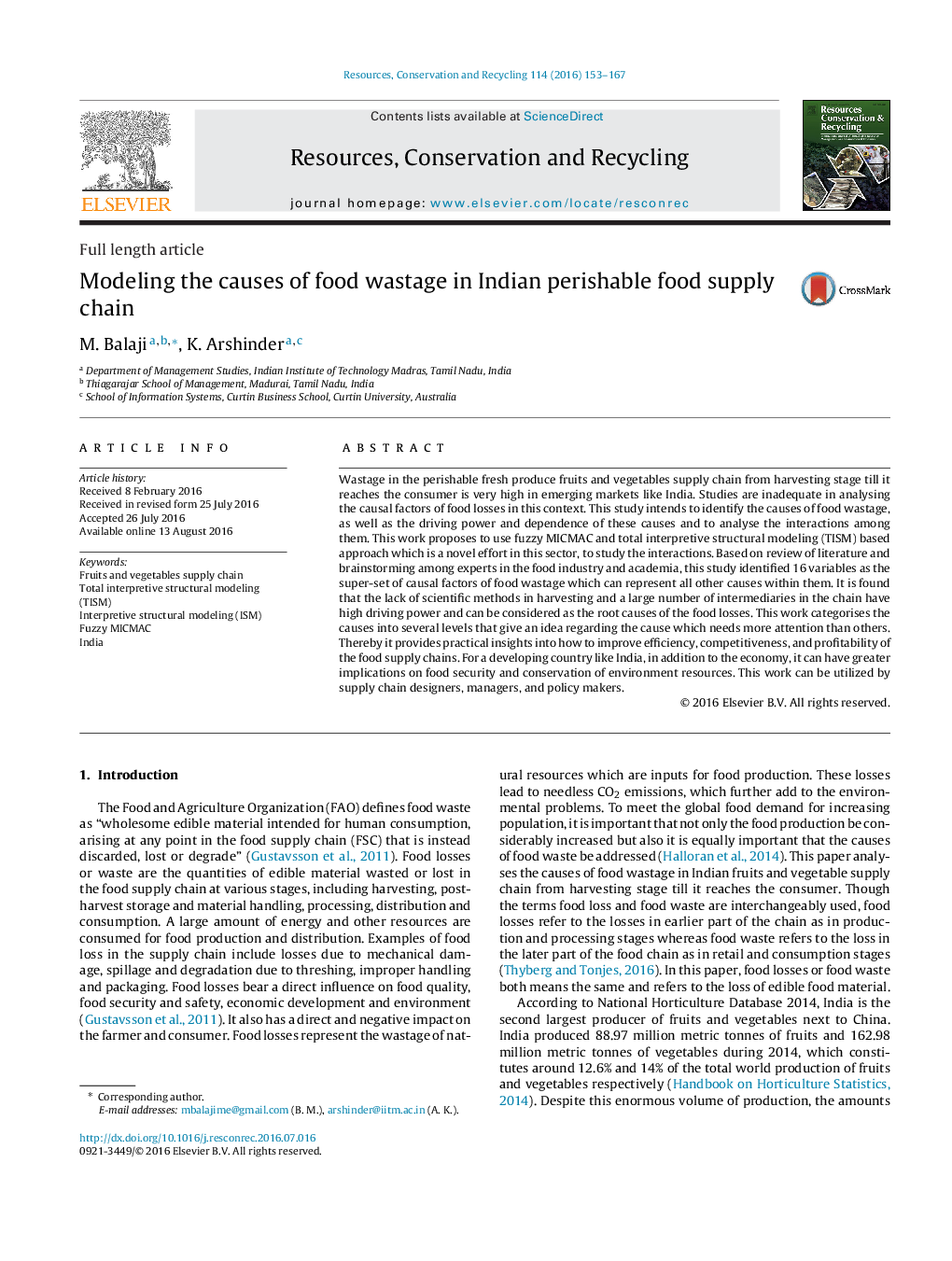| کد مقاله | کد نشریه | سال انتشار | مقاله انگلیسی | نسخه تمام متن |
|---|---|---|---|---|
| 1062669 | 1485677 | 2016 | 15 صفحه PDF | دانلود رایگان |
• 16 causes of food wastage in the Indian fruits and vegetables supply chain are identified.
• The interactions among the causes are modeled using Total Interpretive Structural Modeling (TISM) and Fuzzy MICMAC approach.
• A large number of intermediaries and lack of scientific harvesting methods are significant causes of the food wastage and can be considered as the root causes.
• Poor logistics infrastructure is at the bottom of the hierarchy of the causes of food wastage.
• TISM model shows the interpretations among the direct links and significant transitive links, in which 89 links among the 16 causes is tagged by 45 different interpretations.
Wastage in the perishable fresh produce fruits and vegetables supply chain from harvesting stage till it reaches the consumer is very high in emerging markets like India. Studies are inadequate in analysing the causal factors of food losses in this context. This study intends to identify the causes of food wastage, as well as the driving power and dependence of these causes and to analyse the interactions among them. This work proposes to use fuzzy MICMAC and total interpretive structural modeling (TISM) based approach which is a novel effort in this sector, to study the interactions. Based on review of literature and brainstorming among experts in the food industry and academia, this study identified 16 variables as the super-set of causal factors of food wastage which can represent all other causes within them. It is found that the lack of scientific methods in harvesting and a large number of intermediaries in the chain have high driving power and can be considered as the root causes of the food losses. This work categorises the causes into several levels that give an idea regarding the cause which needs more attention than others. Thereby it provides practical insights into how to improve efficiency, competitiveness, and profitability of the food supply chains. For a developing country like India, in addition to the economy, it can have greater implications on food security and conservation of environment resources. This work can be utilized by supply chain designers, managers, and policy makers.
Journal: Resources, Conservation and Recycling - Volume 114, November 2016, Pages 153–167
